From the Magazine: A Stepping Stone
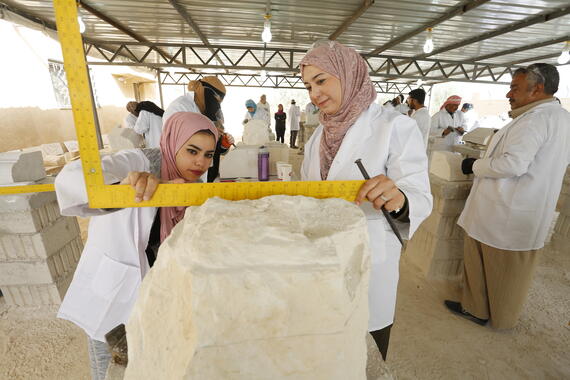
On an unseasonably hot spring day in Brooklyn, New York, resident craftsperson Eddie Ramirez showed Tiara Campbell, 24, how to finish repointing the joints of a 148-year-old mausoleum in historic Green-Wood cemetery. “I want nothing but the best here,” said Ramirez, who has been working with young adults for 15 years. “To achieve the best, you have to strive for perfection. You may not achieve perfection, but you’re aiming at a high goal.”
Nearly 6,000 miles away in Mafraq, Jordan, master stonemason Tony Steel showed Mahmoud Rafeeq, a 40-year-old Syrian refugee, and other trainees how to carefully chisel a stone block into a beautiful arabesque design without shattering the rock. “Were they to be transported back 2,000 years, the construction methodology they would witness would be immediately recognizable to them,” said Steel. “They have accomplished the intimate level of understanding only available to the mason, a truly privileged position.” Their surroundings and circumstances are worlds apart, but their objectives are the same.
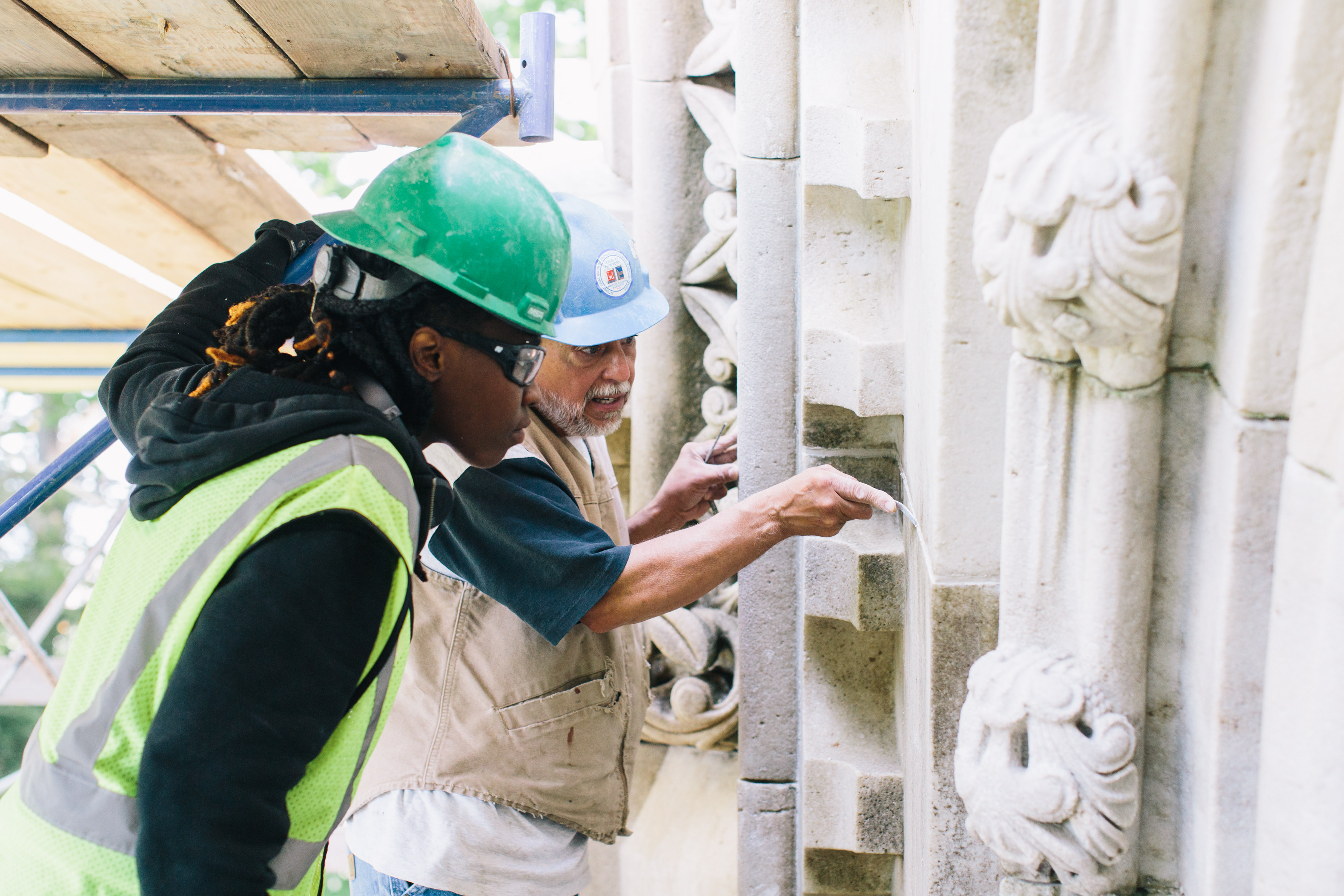
Campbell and Rafeeq are part of two World Monuments Fund programs dedicated to helping members of underrepresented communities gain new technical skills and economic opportunity through heritage conservation. The stonemasonry skills they learn will help them conserve cultural heritage in their communities while also making them better candidates for a range of job opportunities.
In New York City, Bridge to Crafts Careers was launched in 2015, in partnership with Woodlawn Cemetery and the International Masonry Institute. The program offers ten weeks of paid classroom and hands-on construction in masonry conservation at Woodlawn Cemetery, in the Bronx, and Green-Wood Cemetery, in Brooklyn. Since then, 65 interns have graduated from the program, with 77 percent currently employed—the majority in preservation or preservationrelated construction jobs.
This spring, Ramirez oversaw 13 young trainees, including Campbell, as they replaced the mortar joints of the Miller Mausoleum, one of the largest in Green-Wood Cemetery. He said he is most proud of the young people and the work they have accomplished in only a few months. “I’ve been around for a little bit and I’ve seen seasoned masons that would be hardpressed to do what they’re doing in actuality.”
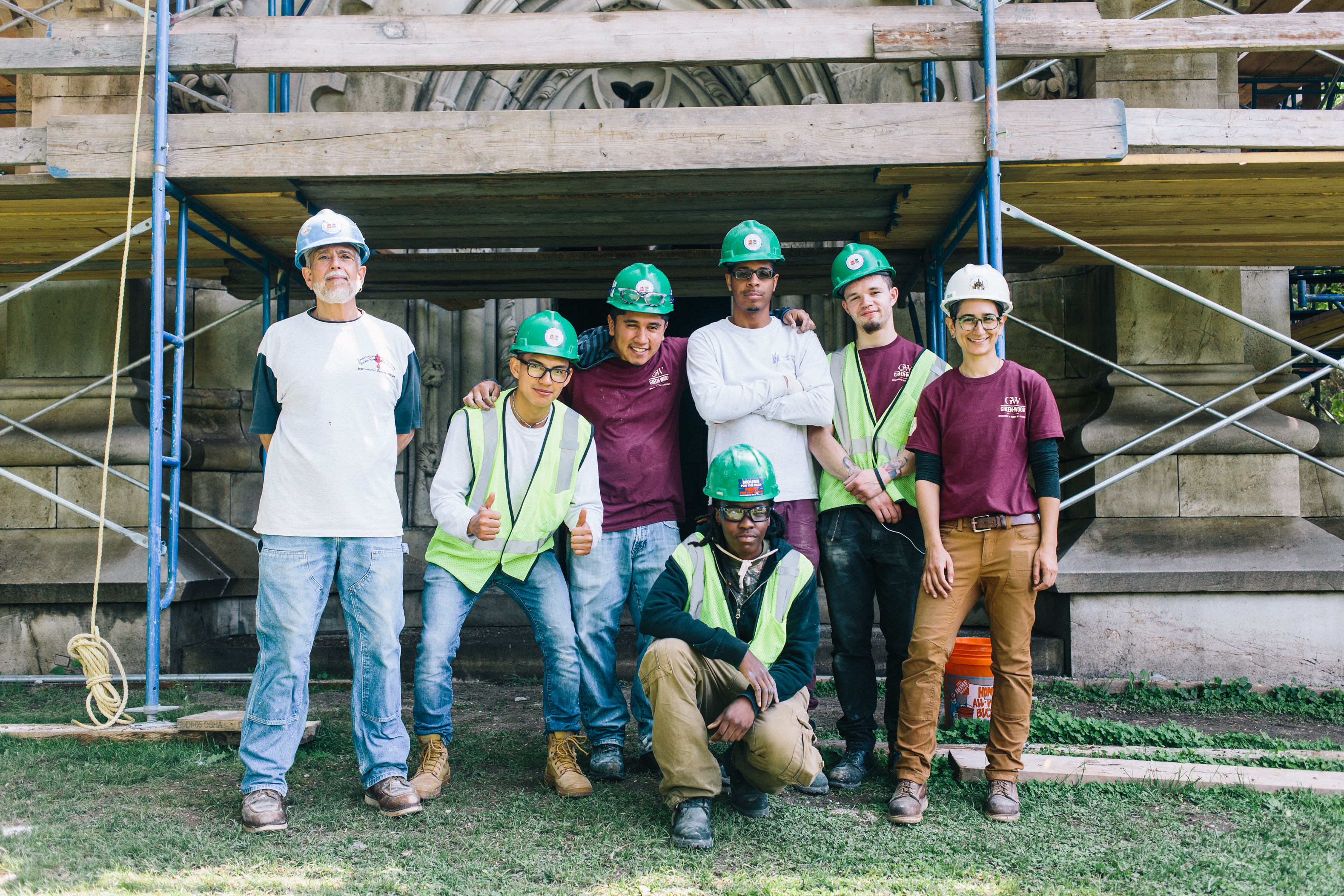
Campbell came to Bridge to Crafts Careers with minimal construction experience. She said knowing the “whys” and not just the “hows” is her greatest lesson from the program. “I’m pretty good with my hands, so once I’m taught I can pretty much grasp it. But it’s the knowledge I probably wouldn’t get anywhere else.” During the course, Campbell developed a passion for heritage conservation. Earlier this year, she told the New York Times that her dream gig would be traveling the world to breathe new life into forgotten or undiscovered historic structures. Following the completion of her internship in May, Campbell was accepted as an apprentice to the Bricklayers and Allied Craftworkers Local 1 Union. “The fact that these buildings have been here forever and they’re still standing, that says something,” she said. “I think we could learn a lot from that.”
Across the globe in Jordan, the inaugural class of Syrian refugees and Jordanian citizens have completed the new stonemasonry conservation training program, learning skills essential to restoring conflict-affected built heritage. Operated in partnership with the Petra National Trust, the program also provides professional development and promotes transnational learning. Steel has been leading Rafeeq and his fellow trainees since October 2017. He said that along with physical decay, armed conflict, and natural disaster, a lack of appropriate training and conservation methodology in the region puts masonry heritage at risk. This program, he said, aims to change that. “We may only be a flea bite on the back of the problem, but from tiny acorns, mighty oak trees grow.”
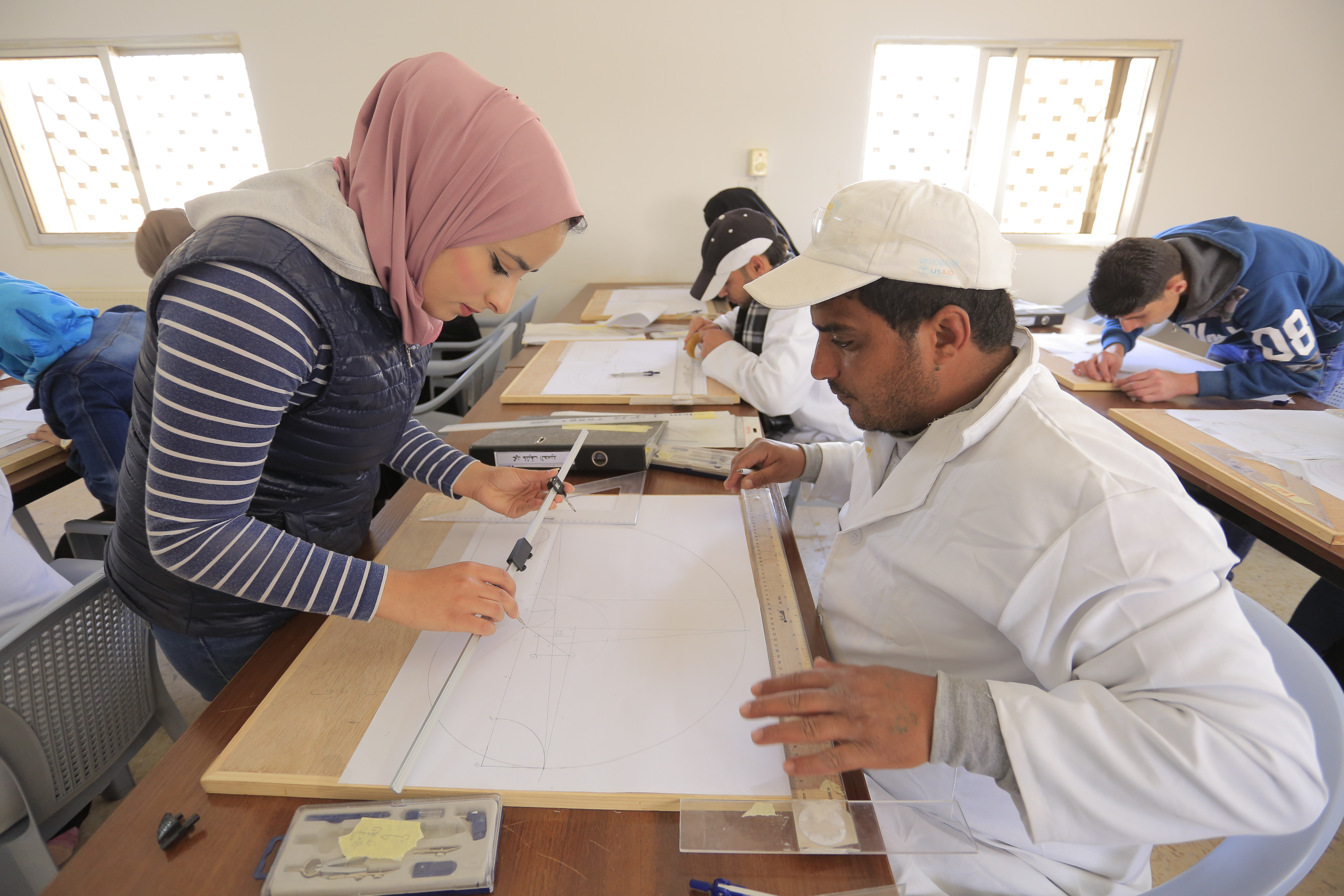
Rafeeq fled from his home in Homs, Syria, in April 2012, during the country’s devastating civil war. He heard about the training program through word of mouth within Mafraq’s refugee community, and began with to applicable experience. Though he lost his house, his shop, and the timber that he once traded, he said there is still hope. “My dream is to be the first man to rebuild Syria, to place the first stone in my country.” Steel said training ordinary Syrians to undertake the restoration of their built heritage on behalf of the rest of humanity gives rise to a complex range of emotions. “It is a great responsibility, privilege, and pleasure.”
For Rafeeq, the work is also personal. “This is not just about carving stone. This course establishes our identity and puts our mark on the history, heritage, and traditions of our countries.”
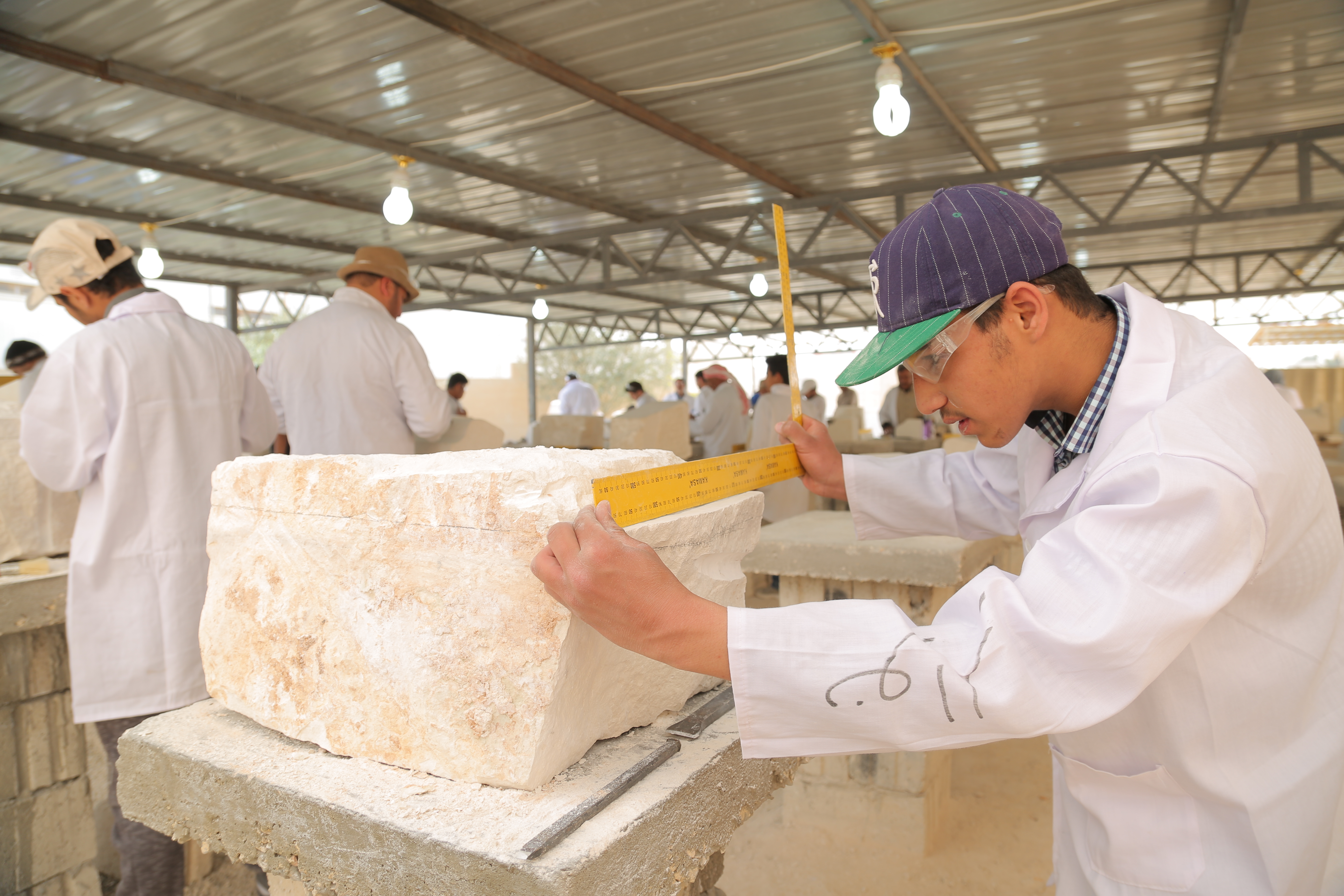
World Monuments Fund has ambitions to expand Bridge to Crafts Careers in the New York City area, and is fundraising for the second year of training in Mafraq, Jordan.
Bridge to Crafts Careers is generously supported by Virginia James and Heckscher Foundation for Children. Additional support is provided by the May and Samuel Rudin Family Foundation, Inc. Our training program in Mafraq is generously supported by the British Council Cultural Protection Fund and Friends of Heritage Preservation.
To read more stories from the 2019 Watch Magazine, click here.
